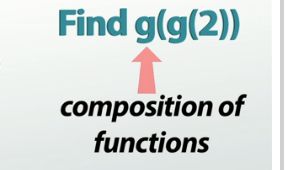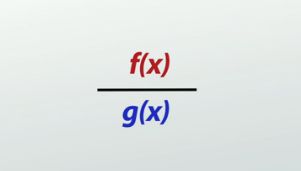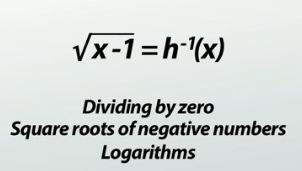Applying Function Operations Practice Problems
After you watch the video and know the material, click HERE for the quiz.
In this lesson, learn how to apply all the different properties of functions to solve complex problems. From function operations and composition to domain and range, get your practice here!
Function Operations
When it comes to functions in algebra, the major things to know are domain and range, function operations, inverse functions and function composition. While it's possible to learn these things separately, it's very easy to combine these topics into a single problem. This provides a good opportunity to review and apply your function knowledge, but it also makes for some pretty confusing problems. The point of this video will be to summarize your function knowledge and give you some practice with these complex questions.
Example #1
First, let's take a look at a twist on function composition. Instead of providing the algebraic function, you might just be given a graph of the function, maybe like this. Just because the information is being presented in a different way doesn't mean we can't answer the same type of questions: maybe find g(g(2)), for example.
 |
This is a composition of functions question because we are substituting one function into another - in this case, one function into itself. Let's start by checking out the inside of this function, g(2), and using the graph to find out this information. In this case, it looks like when we plug x = 2 into the function, it produces an output of 5.
That means we can rewrite our problem to be this - g(5) - and again, go back to the graph to find this value as well. This time, we start by plugging in 5 for the x value, going up to the line, going over and finding that the corresponding output is 7. Therefore, g(g( 2)) = 7!
Example #2
Let's take a look at another example, one that combines multiple function topics. If f(x) = 2x - 7 and g(x) = x - 5, then what is the domain of f(x) / g(x)? For this question, we'll need to know both how to divide functions and also how to determine the domain of a function.
Before we can start thinking about the domain, we'll need to do the division to see what we're dealing with. As long as you don't psych yourself out, function operations like this one aren't too difficult. We simply substitute in what we know each function is into our fraction. That means we end up with f(x) / g(x) = 2x - 7 / x - 5. Now that we have our new function, it's time to start thinking about the domain. We'll need to recall that the domain of a function is most often all real numbers but that there are a few common properties that prevent this from being the case. The main ones are:
 |
- Dividing by zero
- Square roots of negative numbers
- Logarithms of negative numbers
Looking at our function here, I don't see any square roots or logs, so we're good there. But we do have a fraction, which means dividing by 0 is a possibility. That would mean that x - 5 would have to be 0 for this to be an issue. Could that happen? Is there a value of x that makes x - 5 = 0? Sure there is, if x = 5! That means that x = 5 needs to be excluded from our domain. If we substituted that into our fraction, we would get an undefined value, which isn't allowed. Therefore, our answer is any real number except 5.
Example #3
We can do very similar problems, but with inverse functions instead of division of functions. For example, if h(x) = x^2 + 1, what is the domain of the inverse of h?
We'll do the same process at the end of determining if there are any values we need to exclude from the domain, but first we have to find the inverse of h. That's a process of replacing h(x) with y, switching the y with the x and then re-solving the equation for y. Doing that with this example means we'd have to first subtract 1 from both sides, then undo a power of 2 with a square root. That leaves us with our new function, h inverse, as the square root of x - 1.
 |
Again, we see if there are any trouble spots in this function that would mean we have to exclude values. In this case, there aren't any fractions to worry about, but there is a square root. That means we have to worry about the possibility that we could end up with the square root of a negative number (something that's undefined). In this case, that means we have a problem if x - 1 is negative. What we really want is x - 1 to be greater than or equal to 0. As long as that's true, we don't have a problem. Quickly solving this inequality shows us that as long as x is greater than or equal to 1, we're fine. That means the domain of h inverse is all real numbers that are greater than or equal to 1.
Hopefully these examples make you feel a little more confident in your ability to use functions!